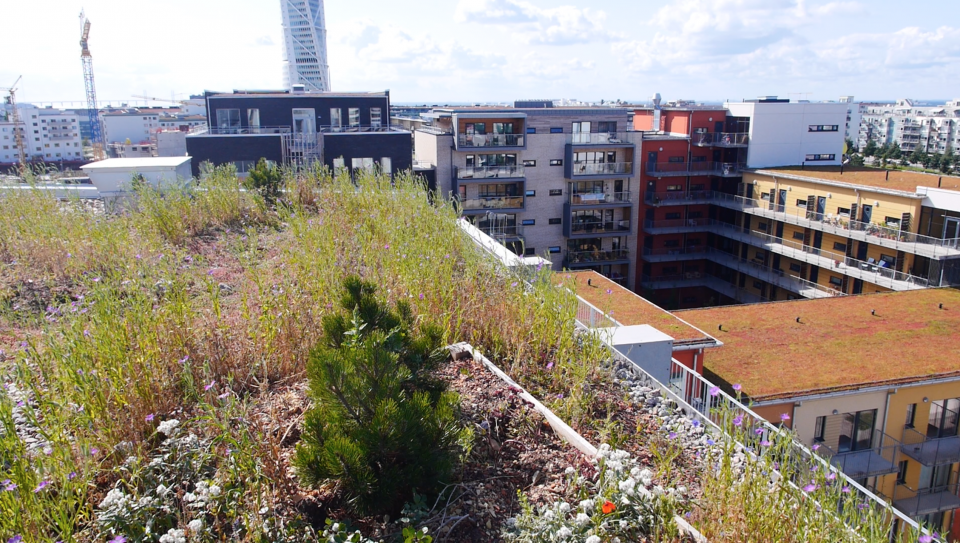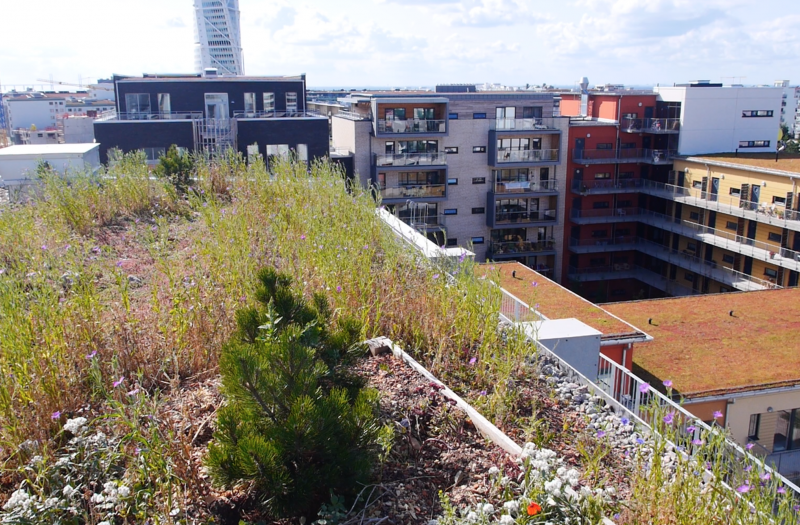Multifunctional urban greening in Malmö, Sweden

Both extensive and semi-intensive roof surfaces at the large roof on top of the residential building. The vegetation is divided into sections of lush dry-meadow vegetation (about 70 %) next so sections of lower vegetation with mainly sedum (about 30% of the roof).
At the property’s recycling house there is an extensive wetland / wet meadow with native wet meadow plants.
Growing medium depth vary from 80 mm up to 300 mm in different sections at both of the roofs.
The main purpose of the roof is to offer an unique green environment to the residents in the house. In the project every surface, also on the ground below, is maximized with greenery. The greenery offers a range of ecosystem services which also benefits the neighbors and the city.
Biodiversity: The plants selected are by 90 % native plants in Sweden and/or the region, mainly meadow plants but also sedum and shrubs. The total number of different plant species included at the installation (seed, sedum mats, plug plants and container plants) is more than 60...
- Increase amount of green open spaces for residents.
- Increase Biodiversity.
- Increase quality and quantity of green and blue infrastructures.
- Improve connectivity and functionality of green and blue infrastructures.
- Reduce load to sewer system.
- Reduce run-off.
- Flood peak reduction.
- Reduce drought risk.
- Reduce flood risk.
- Reduce risk of damages from drought.
- Increase accessibility to green open spaces.
- Changing image of the urban environment.
Small size enterprise with a lot of courage. Working closely with experts. Project funding that supports innovation. In this case the project was partly financed (40%) from VINNOVA, the Swedish Innovation Agency.
That it is possible to create a wetland roof with extreme drought tolerance (we had 7 weeks without rain in spring of 2018 but the wetland roof develops extraordinary nice).
Partly financed (40%) from VINNOVA, the Swedish Innovation Agency.
Jonatan Malmberg, SGRI


